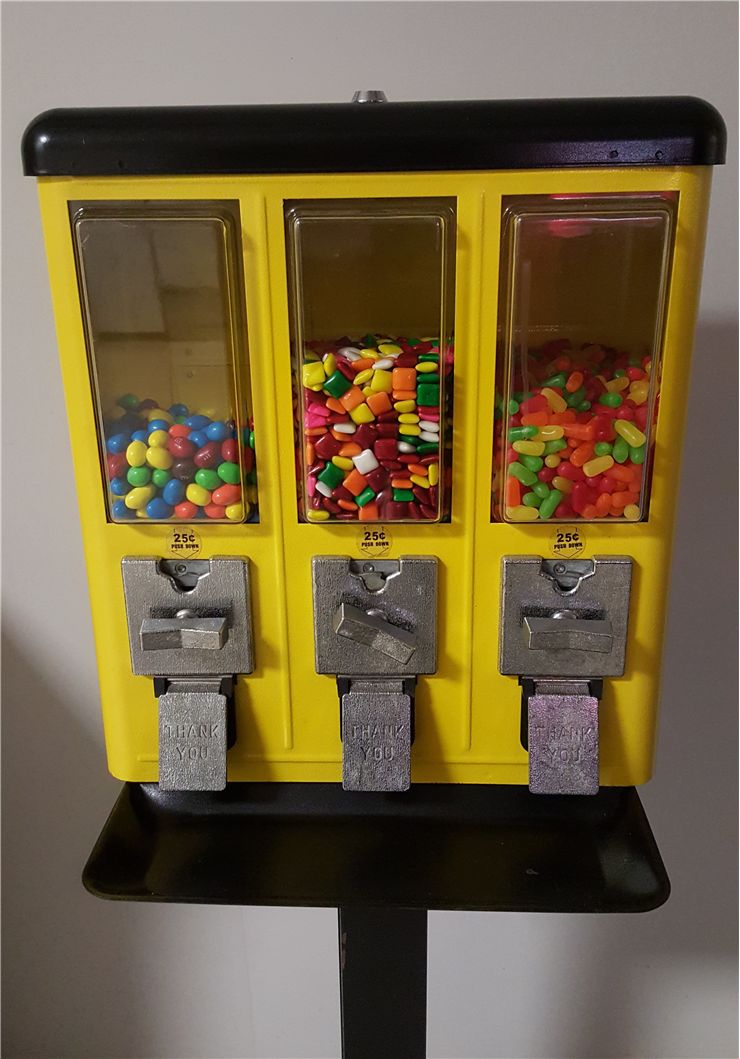Bubble Gum Machine - Gumball Machine History
You cannot tell the history of chewing gums fully without mentioning vending machines that popularized them incredibly in the early 20th century when modern recipes for chewing gums enabled a much better experience than before.
The vending and gumball machines started appearing all around the world. Gumball machines offered a profitable business to the able sellers to purchase sweet gums from manufacturers for an affordable price and then sell them to end customers for a higher price using an automated process that did not require the seller present to dispense the gums.
Chewing gums have a relatively long shelf life. The additional positive point came from the price of gumball vending machines and their ability to be placed in public areas for free if their operators would donate a percentage of proceedings to a charity or some general cause. They were much less expensive than the vending machines that dispensed larger snacks or soft drinks in their basic designs and the need for additional features (for example, they did not require power to operate or refrigerate). The reliability of gumball machines was also a point of praise, often causing them to be placed in locations that saw foot traffic around the clock, enabling anyone to purchase chewing gum easily. Gumball machines appeared from the first moment they were placed in train stations, general stores, pubs, parks, and tourist locations.

The first chewing gum vending machines appeared on the United States market around 1888, making them one of the earliest coin-operated vending machines in the world. During that time of innovation, simple vending machines started dispensing candy, drinks, breath mints, and more exotic products such as pencils, razor blades, perfume, and even toilet paper. Gumball machines, as we know them today with their spherical glass (or more commonly plastic) dome or sphere, were introduced in 1907. This first model was probably created by Thomas Adams Gum Co., responsible for some of the most popular chewing gum products. The two most popular manufacturers of gumball machines were Norris Manufacturing Company (who could claim a patent in 1923) and Ford Gum & Machine Co. A fascinating moment in gumball machine history happened during American Prohibition when all forms of gambling were forbidden. This impacted some gumball machines since some were viewed as “gambling machines” since they had the option to reward every 10th user by giving them their penny coin-back.
Most gumball machines had a straightforward design, including a glass or plastic sphere that housed multi-colored Bubble Gum chewing gums and a simple operating mechanism below it that accepted coins. When the user puts in the cash and operates a small lever, the mechanism inside the machine releases one of the gums into a chute that the customer can reach. A one-way flap connected the user-accessible area from the rest of the gumballs. While many machines used this simple approach, some newer models elected to use electricity to control more elaborate forms of gumball transport, such as lifts, pulleys, ramps, and drops.
